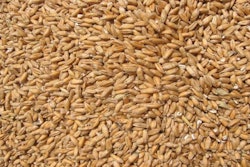
There has been a positive response from soy value chain partners on a new benchmarking tool for soy sourcing, according to the European Feed Manufacturers’ Federation (FEFAC), with 8 programs passing review against its Soy Sourcing Guidelines.
The programs that fully comply with the Guidelines are AAPRESID-AC (a soy producer association in Argentina); traders and processors, ADM Responsible Soybean Standard, Cargill Triple-S and Cefetra CRS 3.1; FEFAC members AIC FEMAS (Responsible Sourcing Module) of the United Kingdom and the Belgian compound industry feed association (BEMEFA); and other organizations, ISCC EU & ISCC PLUS and RTRS.
FEFAC and its partner, International Trading Center (ITC) expressed their pleasure at the initial response of soy value chain partners who readily took up the invitation to submit their programs to the customized benchmarking system for responsible soy programs. More than a dozen program owners inquired about the benchmarking facility.
“We are very pleased with this result,” said Angela Booth, chairperson of the FEFAC Sustainability Committee. “Several of the above-mentioned program owners have put significant effort into aligning their schemes with the requirements of the benchmarking review. It is now possible for interested market partners to start sourcing in line with the FEFAC Soy Sourcing guidelines.”
To build on the transparency and robustness of the process, the FEFAC Soy Sourcing Guidelines, the online ITC benchmark tool including a guidance document about the benchmark process and the approved program can be found online.
In August of 2015, FEFAC published the first version of its Soy Sourcing Guidelines to inform European feed producers who wish to source “responsible soy” – in other words, that which has been produced more sustainably from the environmental, social and economic points of view.

















